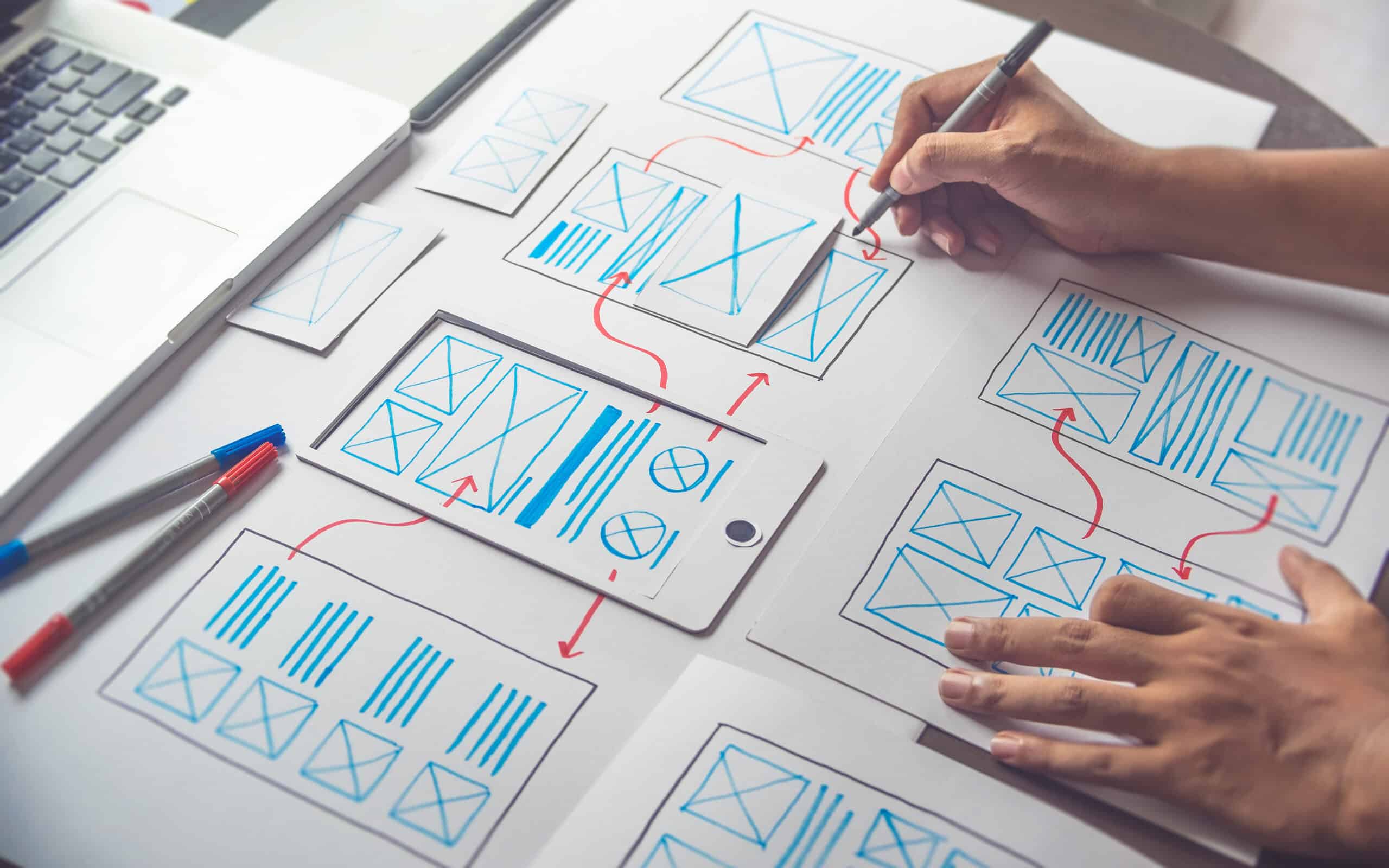
Key Notes
- When you think about design thinking, it’s okay not to be completely clear on its end game.
- The reality is that design thinking is one of the best ways to solve a customer problem.
- Considering why design thinking is essential for innovation will help you uncover what has made it a major buzzword.
In today’s business world, innovation is one of the biggest differentiators in increasingly crowded market verticals. Companies seek to create distance between themselves and competitors through tools like design thinking.
While design thinking may have originally started as a way to create innovative and sleek products, it has since taken on a much bigger life. Whereas it was used explicitly by the corporate world, design thinking has come full circle and now includes schools, the public sector, and personal projects.
What Is Design Thinking?

When you put your customer’s needs above everything else, this is the simplified version of design thinking. It’s safe to say that design thinking is a people-focused concept that considers how people interact with a product or service to improve it.
The best companies utilize design thinking, which focuses on how people use a product in the real world to see what refinements and improvements can be made. While design thinking has existed since the early 1950s, it has come a long way and is now a concept taught in business schools across the United States.
The hope is that you can find achievable and economically viable results by incorporating design thinking into an organization or even with personal projects.
Difference Between Design and Design Thinking
To best understand how design thinking differs from design, we turn to a famous quote from Steve Jobs. One of the most famous individuals in corporate history who was obsessed with design, Jobs understood best that designs were far more than just how something looked.
“Most people make the mistake of thinking design is what it looks like. People think it’s this veneer – that the designers are handed this box and told, ‘Make it look good!’ That’s not how we think design is. It’s not just what it looks and feels like. Design is how it works.”
It’s hard to imagine anyone putting it more succinctly about the importance of design thinking, especially from a company like Apple that is obsessive about design. Perhaps this is better said in a way that ties design thinking to innovation as it’s used to create a better future for customers and how a designer can create something that meets the customer’s needs.
The Phases Of Innovation

©Tint Media/Shutterstock.com
As you dive deeper into design thinking, it’s essential to incorporate the notion that there are several steps associated with this process. While it will vary for companies and individuals on a case-by-case business, there are some generally agreed-upon principles regarding how design thinking relates to innovation.
Empathizing
If you ask anyone specializing in design thinking, they will likely tell you that stage 0, before you define the problem, is to emphasize the situation with the user. Here, you become the customer you are trying to support and talk to them about the issues so you can understand their perspective on why something doesn’t work. This ties directly to being able to define the problem you are going to solve.
Define The Problem
When you try to tie together design thinking and innovation, it all starts with shifting your focus to the outcome of any process. In other words, you want to think through to the end and know your end game. What does success look like with your design thinking process? It also helps to outline the exact problem that is causing a revamped design thinking process to take place.
Ideate
Now that you have clarified your intended outcome, the focus shifts to the solution. It’s at this stage that you are going to start thinking through what the solutions to the problems you’ve identified would look like. However, it’s super important to remember that in this innovation stage, you must keep your customer or the end user in mind. If you don’t, you will likely get lost in the design thinking process, wasting too much time doing work that won’t count.
Prototyping
Now that you have clarified your focus and started to think about the goal, it’s time to put pen to paper. This third step will focus on development and coming up with initial solutions to the problem.
At this step, you’ll be doing lots of testing to see the best solution to your identified customer problem. This can be frustrating, but if the end game is a happy customer and end user, you’ll need to succeed in this step.
Test And Implement
The last thing you’ll focus on during the innovation process is actually to begin implementing the solution you have discovered. The bright side is that it’s in this step that everything you have worked on begins to take shape, and you start to see the results. Testing, retesting, and prototyping will finally pay off if you have done the job correctly.
However, remember that this phase might also require you to take one step back to development if you need to make any tweaks. Good innovation takes time and doesn’t come quickly, so if you have to go back to the drawing board to make quick enhancements, it’s well worth doing so.
Why Is Design Thinking So Important?

It’s easy to write off design thinking as just another corporate buzzword, but the proof is in the results, and design thinking, as Apple shows, is well worth partaking in. Of course, design thinking is much more than just designing good products, even if you’re Apple.
Solving Needs
One of the primary purposes of design thinking is to solve a basic need that humans will have. There is a better-than-good chance that as much thought went into a product, there is something that its designers couldn’t have foreseen that customers will want or a pain point they identified (think iPhone 4 and antenna-gate).
Apple discovered after this product was in customers’ hands that holding the phone in a certain way degraded the signal quickly. Apple’s solution was to provide customers with bumper cases, but more importantly, they knew their next phone needed a different antenna design.
This is why design thinking is crucial for future innovation. It helps discover pain points and determine the steps toward solving them.
Tackling Big Problems
Design thinking as a general idea is ideally suited to tackling big problems or problems that are difficult to solve until a certain point. However, you can see the difficulties when you put someone from a business or company in front of a customer and see them interact and behave with something. This is why real-world testing is so essential before something comes to market.
More Innovation
Returning to innovation, design thinking is sometimes necessary to tackle problems head-on and devise better solutions. The more a company can innovate, the better off it will be in solving problems for humanity and its customers, leading to more profits. Design thinking is designed to identify significant issues or pain points, which is why it’s essential for future innovation.
Better Organizations
There is little question that design thinking is one of those things that too many people ignore, but you can’t deny how it can improve an organization. Any time design thinking can be implemented in a business. It can help find an outcome that was previously being considered. For this reason, organizations can become more efficient and find a way to innovate better in the future.
The Roles Design Thinking Plays In Innovation

©Golden Dayz/Shutterstock.com
If you’re still trying to understand precisely why design thinking is essential for innovation, understanding its crucial role will likely help. There are some primary aspects you can break out that will help create a better belief that design thinking and innovation can go hand in hand.
Being User-Centric
When you put the user at the very heart of the design thinking process, you’re going to end up discovering new ways you can innovate. Unfortunately, most designs happen early on in a silo, with just the designers and other internal teams talking about something before it gets into the hands of someone who will use whatever is being created.
Framing The Problem
As you try to frame the problem, you can get to the heart of what is causing an issue with the end user. As soon as you have a good sense of the problem, you can start innovating to address the issues you’ve uncovered and solve them completely.
Being More Creative
One of the best aspects of design thinking is that it encourages being more creative and thinking outside the box. This means more opportunities to brainstorm and innovate, which most designers will enjoy. In other words, this will promote the idea that you can come up with solutions that can solve problems if you don’t have the same constraints you did when something was first built.
Identifying Constraints
Piggyback on the idea of constraints as you get into the design thinking process to innovate, you will identify what constraints exist. Whether it’s money, time, or getting to market, these limitations will help any team become more innovative in a way that doesn’t let constraints stop them from finding a customer-centric solution.
Finding Solutions

Last but not least, by having an opportunity to focus on the solution, you’ve opened the door to innovative solutions to problems. If you can innovate and find a solution, you’ve created more value with your users, which again turns into more profits and, hopefully, customer loyalty.
Other Useful Tools and Concepts
At this point, it should go without saying that design thinking is here to stay, and the benefits vastly outweigh any negatives. Yes, there is a downside, as design thinking might need to be reactive in many instances. Still, if a company correctly implements it from the get-go, it will wind up with happier customers, higher profits, and stronger brand loyalty.
You might also consider that design thinking has more than one process phase. The multi-step process around design thinking has helped make it even more successful over the last few decades. What was once an outside process trying to break down the door with designers has now proven invaluable, just as Steve Jobs said it would.
Conclusion
Having read all of this, you hopefully will come away with a strong understanding of why design thinking and innovation are so tied together. There is little question that, used correctly, design thinking will help businesses and companies worldwide solve big problems that they were otherwise unprepared for after a product, service, or something else is launched to the world.